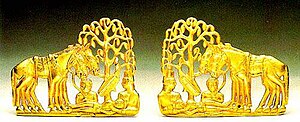
I’d love to have the time to cite links and sources for each of the following. Maybe I can catch up with doing that in the future. But for now I like at least the idea of a bare list the examples of resurrection belief and hope in the ancient world as discussed by Richard Carrier in Not the Impossible Faith.
This post should be seen as part of a set of other posts I have done in the past:
Popular novels and the gospels
Two Greek historians of the 4th century BC, Theopompus and Eudemus of Rhodes, described the Persian Zoroastrian religious belief that “men will be resurrected and become immortal”. This religion — with its belief in resurrection to physical immortality — was still the dominant religion of the Persian empire throughout the Roman period.
Herodotus records the Thracians believed in a physical resurrection of Zalmoxis. The link is to the Wikipedia article where you can read about the religious cult that grew around this resurrected Zalmoxis, a cult that promised eternal paradise for believers (Carrier cites here the attestation of this in Plato’s Charmides, 156d).
Herodotus also reports the belief in the resurrection of Aristeas of Proconnesus. Again the link is to a Wikipedia quotation from Herodotus.
“Lucian records that the pagan Antigonus had told him: “I know a man who came to life more than twenty days after his burial, having attended the fellow both before his death and after he came to life.” (Carrier, p.86)
Celsus listed names of those whom many pagans believed to have been resurrected: Continue reading “The Popularity of Resurrection”
